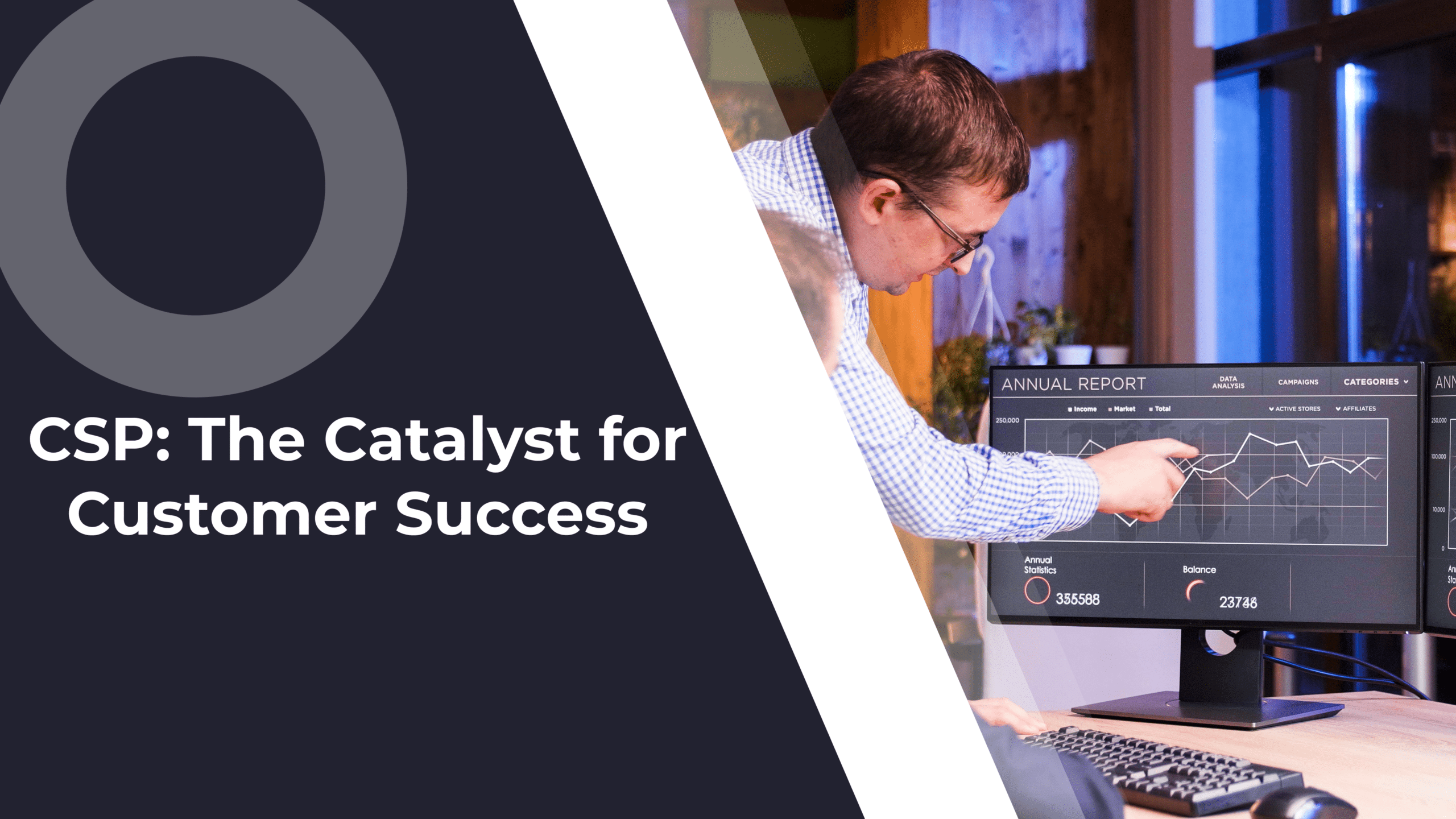While attracting new customers is great, it’s only half the story. The true challenge comes in retaining them. In today’s highly competitive environment, companies have to work hard to inspire brand loyalty and develop long-lasting business relationships.
Top of the to-do list if you’re to have any chance of achieving this is getting a firm grasp on what it is your customers actually want. After all, that’s the only way you can deliver above expectations and create a truly unforgettable customer experience.
Feedback surveys definitely have a part to play, but they’re limited in scope and there’s a time lag involved. So, is there a reliable complementary technique you can deploy?
In three words: customer sentiment analysis.
It’s terrific for giving you real-time insight into who your customers are and how they’re experiencing your brand. It casts a wide net, too. Your customers have opinions on everything from your marketing to your individual products, although they won’t always declare them openly. That’s where customer sentiment analysis comes in.
So, just how does this miraculous, mind-reading process work? Let’s dive in and find out.
What is customer sentiment analysis?
Customer sentiment analysis is the process of gathering and analyzing data about how customers feel. In its most basic form, this could involve going through your online reviews to find out what people think of your product and which improvements they’d like to see.
It differs from other feedback metrics such as engagement rates and email open rates in that sentiment analysis is wider-ranging and more holistic. Rather than telling you what customers are doing, it tells you why they’re doing it.
To take a very simple example, an engagement rate will tell you that lots of people have commented on your social media posts. By contrast, sentiment analysis will tell you whether those comments are positive, negative, or neutral. Crucially, it also explains why.
There are various forms of sentiment analysis. Dedicated customer sentiment analysis software uses machine learning and AI to gather information from all over the internet. It can do this very quickly, and presents results and insights to you in a variety of ways, from heatmaps to word clouds or trend graphs. There are three elements that go into the analysis:
- Emotion detection: the language that someone uses to express themselves gives a clue to how they feel. This aspect of sentiment analysis checks for mood-related vocabulary.
- Fine-grained: this looks at the polarity score of words in a given piece of text, and assigns them a value from very positive to very negative.
- Aspect-based: breaks down the text into its constituent parts and measures the related sentiments.
The output flags different areas of text and categorizes them according to the sentiment. For example, the AI picks out positive and negative words and ones that channel specific emotions.

Image sourced from lumosbusiness.com
Good sentiment analysis software can also provide you with actionable insights that you can feed into your ERP software, your CRM, or your customer success platform to help make effective data-driven decisions.
For instance, you can plug information from your analysis into your CSP to find out how you can better channel resources. Strategically, this can be very valuable, because it helps you understand where to focus your efforts, whether that’s on R&D or customer service.
Similarly, you can prime your CRM solution with customer sentiment insights to help forewarn and forearm your sales and support teams so that they know what to expect from customer calls.
Measuring customer sentiment
A multifaceted approach is best when you want to find out what your customers are thinking. You need to approach the problem from different angles to get reliable results overall, so try a blend of tried-and-tested research techniques and modern listening tools. These could include:
- Customer feedback surveys (email and in-app)
- Social media monitoring (to pick up mentions of your brand)
- Scouring review sites for spontaneous reviews of your brand (people tend to be more honest when they don’t think you’re looking)
- Customer interviews
The critical point is that whatever techniques you use, you have to perform them at scale to get reliable information. Simply asking ten people to attend a focus group won’t cut it. That’s why using up-to-date sentiment analysis software is a good idea, because it’s specifically designed for big-picture data crunching.
Reasons to use customer sentiment analysis
Helps monitor customer feelings about brand’s offerings
If you’re diligent and consistent with your customer sentiment analysis, you can save yourself from disaster. Take streaming platform Twitch, for example. In June 2023, Twitch announced changes to its branded content guidelines and then carefully watched its X feed (formerly Twitter) for customer reaction.
This reaction was not good. In fact, it was so bad that Twitch could easily have lost a huge chunk of its user base because of these changes. But, because Twitch had its customer sentiment analysis software working overtime, they were able to pick up on the problem and reverse the disastrous decision within 24 hours:

Image sourced from techcrunch.com
Twitch streamers appreciated the backtrack, and Twitch saved itself from hemorrhaging users. All thanks to fast, efficient customer sentiment analysis.
Monitoring customer sentiment can also be used proactively, to predict and prevent negative escalations. When combined with AI, customer sentiment analysis can provide real-time insights that help detail and predict a customer’s reaction.
This helped the business analytics platform Qlik, reduce customer escalations by 30%, as their sales team used these real-time insights to better gauge how customers were feeling and how critical an issue was.
Simplifies the process of measuring customer opinions
Measuring customer opinions can be laborious, but there are ways to make it simpler. You could, for instance, hire staff to run surveys and focus groups or chase your customers for reviews and feedback.
The quickest and easiest way to get organic customer opinions, though, is through customer sentiment analysis. For example, a good customer sentiment analysis tool can run through all your social media mentions in seconds and present you with a word cloud detailing common keywords and phrases used in conjunction with your brand.
If the biggest words are negative, you need to figure out what’s going wrong. If positive, keep up the good work! Digging into the word cloud can even tell you what specific things people are talking about regarding your brand/product.

Source: Cision PR
Pinpoints areas for improvement
Customer sentiment analysis can tell you what specific improvements can be made to your business that customers would value most.
For example, KFC used sentiment analysis to revitalize its marketing. As other brands began to focus on healthy food and nutritional value, KFC felt that it was being left behind. So, the chain used customer sentiment analysis to understand what kinds of marketing their target audience would respond to best.
Their insights led them down a very different marketing path from their closest competitors. Rather than releasing health-focused campaigns, KFC began incorporating more memes and pop culture into their marketing.

Image sourced from seobutler.com
Analysis had shown them that this was what their customers were receptive to, and it worked. KFC were able to build engagement and generally improve their customer service experience through customer sentiment analysis and insights.
Monitors customer feedback in real-time
Customer opinion can change very quickly. So, it’s helpful to be able to monitor customer feedback and sentiment in real-time. Good sentiment analysis software can do this for you.
We’re going back a few years here, but the best examples of sentiment analysis helping brands make real-time marketing decisions are Nike’s 2018 campaign featuring NFL star Colin Kapaernick, and Gillette’s 2019 ‘The best a man can be’ campaign.
In the former case, a very vocal minority took to Twitter to complain about Nike figure heading Kaepernick. Kaeparnick had previously angered some Americans by refusing to stand for the national anthem in a protest against police violence.
But Nike’s sentiment analysis revealed that, overall, people felt far more positively about Kaepernick than negatively. So, they stuck with the campaign and were ultimately able to draw a direct correlation between positive customer sentiment about Kaepernick and an uptick in their sales. The advert even won an Emmy.

Image sourced from theguardian.com
By contrast, Gillette’s 2019 ‘The best men can be’ campaign, while praised by many, overall generated more negative customer sentiment than positive, leading the brand to quietly drop the campaign and move in a different direction.

Image sourced from indy100.com
Recognizes trends for smarter decisions
Trends are as fast and as fickle as air currents, and it’s all too easy for a promising trend to fly by before you notice it. But with customer sentiment analysis, you can bury yourself in the heart of your customer base.
The well-known software company Adobe uses sentiment analysis to keep track of how its customers’ expectations are changing, and so predict their future needs. It uses its proprietary AI software, Customer AI, to monitor how users interact with its applications, which yields crucial information about how to engage.

Image sourced from adobe.com
For example, if a user is trialing premium features but hasn’t yet committed, the AI notices that behavior and flags it up as representing a potential upselling opportunity.
More generally, the AI helps Adobe keep track of how tastes are evolving. This is instrumental in the successful development of new products.
Provides insights into your competitiveness
Customer sentiment analysis is one of the best ways to work out what your customers think of you, what they think of your competitors, and how you can get the edge. Take this example from Repustate.
A new healthy snack food company wanted to know how to position themselves in the market, so they hired a company to run a customer sentiment analysis. They discovered what their target customers associated with ‘health’ and ‘healthy snacks’ and learned that their main competitors in the industry were sellers of plain raw fruit and veg.
This helped them to position themselves in the market and to work with their main competitors in ways that benefited everyone, especially the customers.
Enables proactive risk mitigation
Customer sentiment analysis can flag risks before they become problematic. Let’s say that you’ve released a marketing campaign which, for reasons you did not anticipate, is upsetting some people.
Through customer sentiment analysis, you can quickly pick up on any negative chatter about this campaign, understand what the problem is, and take steps to mitigate any damage before things get out of hand.
Customer sentiment analysis keeps you aligned with your customers’ thoughts and feelings on what’s important to them, and that means you can both avoid risks and pivot to mitigate risks when they do arise.
Customizes marketing based on sentiment
Customer sentiment analysis is one of the best ways to tap into what drives and energizes customers at any given moment.
Be careful, though. If you aren’t diligent with your sentiment analysis, you could go very wrong with sentiment-based marketing, as Pepsi proved with its infamous advert featuring Kendall Jenner.
While Pepsi correctly deduced that customers were concerned about social dissent and the perceived failings of society, they failed to apply that lesson properly to their product. Pepsi is not, in fact, the cure to a fractured world, and it was wrong of them to suggest that it was.

Image sourced from ft.com
Boosts customer satisfaction and loyalty
When customer sentiment data is gathered and applied properly, it can bring a number of big benefits for your business, including great customer retention and boosted profits.
Running regular customer sentiment analysis is like checking in with your customers and saying “Hey! How are you?” It helps you to understand them better, which in turn helps to deepen and strengthen your relationships with your customers. On top of this, it makes sure that updates and improvements remain customer focused, driving further satisfaction and long-term loyalty.
A great example of this was SaaS provider Techsmith’s partnership with Hotjar. They collected survey information from certain points on their website, to determine certain customer pain points. This meant they were able to connect certain behaviors with customer sentiment, which led to customer preferred improvements to their UX, UI and products.
So, if you want to build strong, loyal, and lasting relationships with your customers, sentiment analysis is the way forward.
Enhancing customer success teams with sentiment analysis
The work of your customer success team is all about helping your clients deliver. That means cultivating an in-depth understanding of their business model and key objectives. The feedback from customer sentiment analysis can prove invaluable in several important ways:
- tailoring communications: adapting the message to the recipient to ensure conversations go smoothly
- understanding client types: segmenting your data by product, region, client size etc. so you can apply previous learnings to future situations
- developing training programs: using sentiment-based insights to fine-tune customer success training and improve service delivery
It’s also useful for setting priorities. That means you can combine sentiment analysis with your time management system to make sure that your customer success teams are devoting the right amount of time to the tasks and topics that really matter to your customers.
The result is a faster, more efficient, and much more pleasant interaction between client and brand.
Build stronger relationships with customer sentiment analysis
Real customer-led growth can only come with customer sentiment analysis. This is because customer sentiment analysis gives you deep insights into your customers’ thoughts and feelings without invading their privacy. You can use this to build strong, productive relationships with your audience that will inspire years of loyal customers.
If you want to truly understand how your customers feel about your brand, your product, and your marketing, and you want to put those insights to work in truly productive ways, customer sentiment analysis is the way forward.




